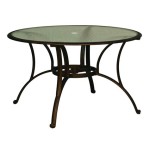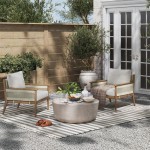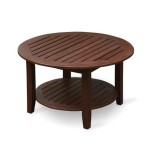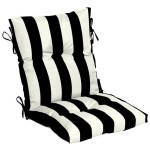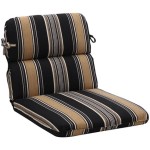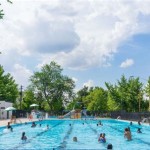Outdoor Privacy Fence: Free Standing Options and Considerations
The need for privacy and aesthetic improvement in outdoor spaces has led to an increased demand for outdoor privacy fences. A free-standing privacy fence, also known as a portable or temporary fence, provides a readily deployable solution for creating secluded areas, defining boundaries, or simply enhancing the visual appeal of a property. Unlike traditional fences that require permanent installation, free-standing options offer flexibility and convenience, making them suitable for a variety of applications and environments. These fences can be easily repositioned, removed, or adjusted as needed, making them an excellent choice for renters, individuals with temporary privacy needs, or those who prefer to avoid the commitment of a permanent structure.
When considering a free-standing outdoor privacy fence, several factors influence its selection and effectiveness. These include material choice, design, stability mechanisms, and local regulations. A thorough understanding of these aspects is essential for making an informed decision and ensuring the fence meets specific privacy and aesthetic requirements.
Material Selection for Free-Standing Privacy Fences
The material composition of a free-standing privacy fence significantly impacts its durability, aesthetics, and maintenance requirements. Several materials are commonly used, each offering distinct advantages and disadvantages.
Wood remains a popular choice for its natural appearance and versatility. Options range from treated pine, offering affordability, to cedar and redwood, known for their resistance to decay and insects. The visual appeal of wood can be further enhanced through staining, painting, or other decorative treatments. However, wood fences require regular maintenance, including sealing, staining, or painting, to prevent weathering and prolong their lifespan. The weight of wood can also be a factor when considering portability and ease of relocation.
Vinyl, a synthetic material, presents a low-maintenance alternative to wood. Vinyl fences are resistant to rot, insects, and weathering, requiring minimal upkeep beyond occasional cleaning. They are available in a variety of colors and styles, mimicking the appearance of wood without the associated maintenance. While vinyl is generally more expensive than treated pine, its longevity and ease of care can make it a cost-effective option in the long run. The light weight is a bonus in many situations where moving the fence is necessary.
Metal, such as wrought iron or aluminum, offers a durable and aesthetically pleasing solution. Wrought iron provides a classic, ornate look, while aluminum offers a lightweight and rust-resistant alternative. Metal fences are often used for decorative purposes as well as privacy, with designs incorporating intricate patterns and details. While metal fences are generally low-maintenance, wrought iron may require occasional painting to prevent rust. Aluminum is a very lightweight option as well.
Composite materials, made from a blend of wood fibers and recycled plastic, combine the aesthetic appeal of wood with the durability and low maintenance of plastic. Composite fences are resistant to rot, insects, and weathering, and they do not require staining or painting. They are available in a variety of colors and textures, offering a versatile option for creating a natural-looking privacy fence. Composite materials can be more expensive than wood or vinyl, but their longevity and ease of care can justify the investment.
Bamboo screens offer a natural and sustainable option for creating privacy. Bamboo is a fast-growing, renewable resource that provides a unique and exotic aesthetic. Bamboo fences can be constructed from individual bamboo poles or woven into panels. While bamboo is relatively durable, it may require occasional treatment to protect it from moisture and insects. The natural variability in bamboo can contribute to its unique charm.
Design and Stability Considerations
The design of a free-standing privacy fence plays a crucial role in its effectiveness and aesthetic appeal. Furthermore, ensuring the fence remains stable, even in windy conditions, is paramount for its functionality and safety.
Panel design significantly influences the level of privacy offered. Solid panels provide maximum privacy, completely blocking the view from outside. Lattice panels offer partial privacy while allowing some light and air to pass through. Openwork designs, incorporating decorative patterns or gaps, provide a more airy and visually appealing option while still offering some degree of privacy. The choice of panel design depends on the desired level of seclusion and aesthetic preferences.
Frame construction is essential for the structural integrity of the fence. A sturdy frame, typically made from wood or metal, provides support and reinforcement for the panels. The frame should be designed to withstand wind loads and other environmental factors. Proper construction techniques, such as using strong fasteners and ensuring precise alignment, are crucial for creating a durable and stable fence.
Stability mechanisms are necessary to prevent the fence from tipping over in windy conditions. Several methods can be employed to enhance stability. Weighted bases, such as concrete blocks or sandbags, can be attached to the base of the fence to provide additional weight and resistance to tipping. Ground anchors, such as stakes or augers, can be driven into the ground to secure the fence in place. Interconnecting panels, where adjacent panels are connected to each other, can create a more stable structure. The choice of stability mechanism depends on the size and weight of the fence, the wind conditions in the area, and the soil type.
Portability, while a key feature, must be balanced with stability. A lightweight fence is easier to move, but it may be more susceptible to wind. A heavier fence is more stable, but it can be more difficult to relocate. Careful consideration should be given to the balance between portability and stability when selecting a free-standing privacy fence. Modular designs, where the fence is composed of individual panels that can be easily assembled and disassembled, offer a compromise between portability and stability.
Windbreaks can be incorporated into the fence design to reduce wind loads. Openings or gaps in the panels allow wind to pass through, reducing the force exerted on the fence. Alternatively, wind-resistant materials, such as perforated metal or mesh, can be used for the panels.
Regulations and Placement Considerations
Before installing a free-standing privacy fence, it is essential to consider local regulations and placement guidelines. These regulations can vary depending on the municipality and may impact the permitted height, location, and design of the fence.
Zoning regulations often dictate the permissible height and location of fences. Some municipalities have restrictions on the height of fences, particularly in residential areas. Additionally, zoning regulations may specify setback requirements, dictating how far the fence must be set back from property lines or public rights-of-way. It is essential to consult with the local zoning office to ensure compliance with all applicable regulations.
Homeowners' association (HOA) rules may also impose restrictions on the design, color, and materials of fences. HOA guidelines are often more restrictive than municipal regulations, aiming to maintain a consistent aesthetic within the community. Before installing a fence, it is crucial to review the HOA guidelines and obtain approval from the HOA board if required.
Placement considerations are crucial for maximizing privacy and minimizing potential conflicts with neighbors. The fence should be positioned to effectively block unwanted views while respecting property lines and neighbor relationships. Clear communication with neighbors can help avoid misunderstandings and ensure a positive relationship.
Utility lines, both above and below ground, should be avoided when installing a fence. Contacting the local utility companies to locate underground utility lines can prevent damage and ensure safety. Above-ground utility lines should also be considered to avoid any interference or hazards.
Accessibility should be maintained when placing a fence. Ensure that the fence does not obstruct access to walkways, driveways, or other essential areas. Consider the impact of the fence on pedestrian and vehicular traffic.
Drainage patterns should be considered to prevent water accumulation or flooding. The fence should not impede the natural flow of water or create drainage problems for neighboring properties. Proper grading and drainage solutions may be necessary to mitigate any potential issues.
Sunlight and vegetation should be considered to avoid shading or damage to plants. The fence should be positioned to minimize the impact on sunlight reaching gardens, lawns, or other vegetation. Additionally, the fence should be kept clear of overgrown vegetation to prevent damage and maintain its appearance.
Ultimately, a well-planned and properly installed free-standing privacy fence can greatly enhance the enjoyment and functionality of an outdoor space. By carefully considering these aspects of material selection, design, stability, regulations, and placement, individuals can make informed decisions and create a privacy solution that meets their specific needs and complements their property.

Lirago 48 X 75 In Black Free Standing Outdoor Privacy Screen Fence Cy A Ge04028 The Home

Topbuy Outdoor Privacy Fence Panel 2 Picket Pvc Decorative W 3 Cuspidal Stakes Trash Enclosure Freestanding For Garden Black

Lirago 48 X 75 In Black Free Standing Outdoor Privacy Screen Fence Cy A Ge04028 The Home

Metal Outdoor Privacy Screens Freestanding With Bracket 4ft W X 6ft H Decorative Screen Panel For Patio Balcony Backyard Gar

Freestanding Modular Metal Privacy Screen Fence Wall Art Outdoor Fsf 01 Etsy

Outsunny 78 X 48 Metal Outdoor Privacy Screen With Stand Rhombus Black Climbing Plant Trellis

Dropship Fishbone Pattern Metal Outdoor Privacy Screen Freestanding Divider Decorative Fence Set For Deck Patio Balcony Garden Indoor 72 H 35 W Black To Sell Online At A Lower

Natural Wood Privacy Screen Freestanding Outdoor Temu

Freestanding Modular Metal Privacy Screen Fence Wall Art Outdoor Fsf 13 Etsy

Enclo Privacy Screens Tiaga Slatted Freestanding Or Surface Mounted Patio Furniture At Lowes Com

